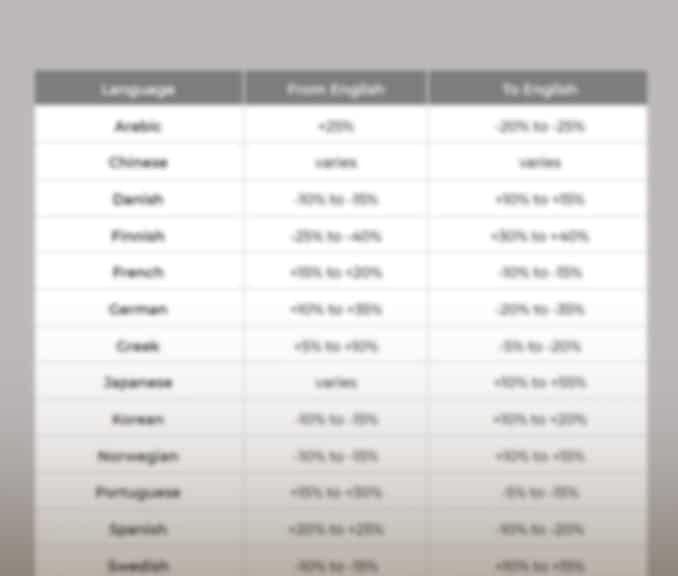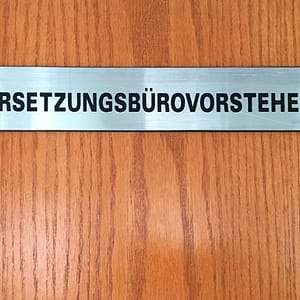7 Translation Questions Answered: Tips for Working with a Translation Agency
Translating websites, marketing materials, and other content can help organizations increase their reach and engage multicultural audiences. Yet not everyone knows how to get started.
Partnering with the right translation provider is important. Tried and true processes lead to consistent, high-quality work. And experienced, highly vetted linguists are critical to ensuring translations are not only accurate, but tailored to the target audience.
In this article, we answer some of the most common questions we receive about translation. By understanding how it works, you can take an informed approach and get the results you need.
1. How Do I Know I’m Getting an Accurate Translation?
Translation agencies have different processes for ensuring translation quality. We’ve found it most effective to implement checks and balances at every stage of the process.
All of our translations pass through two levels of quality control. First, the text is translated by a qualified linguist. Then, it is edited by a second translator who fine-tunes the translation and double-checks for accuracy. Next, we have a third language professional performs quality control to make sure the final product conforms to all project specifications. This three-step process holds each linguist accountable for producing high-quality work every single time.
The caliber of the linguists has a direct impact on the quality of the final translation both with regard to language and subject-matter expertise. We find that monitoring linguist performance on an ongoing basis is an effective means of ensuring you receive top-notch, accurate translations.
2. How Does the Translation Process Work?
We like to start by ironing out the details. By having an upfront discussion about things like target audience, reading level, subject matter, special terminology, document format, and turnaround time, we can make sure everyone’s on the same page. Once your content is ready, we analyze your materials and provide a quote. After all the parameters are agreed upon, we get started.
First, we find the right translators for your material—experts in the subject matter and native speakers of the language they’re translating into. If you have ongoing work, we assign a dedicated team of linguists familiar with your style and content.
We follow the steps outlined above, sending the text first to a translator, then an editor. If you wish to have your own reviewer check the translation, this happens next (more about this in question 6). We then take your reviewer’s comments, validate them, and implement any changes. Then, we proceed with any final steps. This could include typesetting, uploading web content to your CMS, or reviewing your app to ensure the translations have been placed properly and function according to specifications. A last round of quality check is performed, after which you receive your deliverables. Once the process is finished, we make sure your translation memory and glossary are up to date (see question 5 for more details).
Behind the scenes, the process involves a lot of checks and balances, all put in place to make sure the final translation turns out right.
3. What Do I Need to Get Started?
Most translation providers can work from any type of file format. We recommend providing editable files whenever possible (for example, providing the InDesign file with all the linked files).
When the content is complete, send us your final version so we can provide a firm estimate of price and turnaround time. If you anticipate that there may be any updates to the content, communicate this up front. Unexpected, last-minute changes can impact the timeline and add to the cost.
It’s important to understand that the quality of a translation is directly correlated to the quality of the source material. Poorly written text can confuse even the best translators. Take the time to develop strong source content from the start, because if your source message is not clear, the translation will not be clear.
Provide any reference materials that will help the translator better understand the context so there will be no guesswork about your intended meaning.
Get in Touch!
Reach out to discuss your next translation project with a member of our team.
4. How Does Text Expansion Work?
Text expansion occurs when the target language (the language you translate into) takes up more space than the source language. This can result from differences in grammar, sentence structure, or the way terminology is used across languages. Sometimes, expansion can result from word length. For example, an English-into-German translation may produce a similar number of words, but German has long, compound words that take up more space.
Text contraction is just the opposite. When translating from English into Danish, Swedish, or many Asian languages, for example, the translated text will take up less space.
There’s no easy formula to follow because the percentage of expansion/contraction can change significantly even within a single language pair. One of the largest factors is the subject matter, but grammar, tone, writing style, syntax, word usage, terminology, and sentence structure can also contribute to expansion and contraction.
While a typesetter will adjust your layout to accommodate for text expansion and contraction, it’s still important to understand how it will impact the look and feel of your materials. To help, we’ve created a chart outlining how different languages behave when translated.

Text Expansion and Contraction Chart
We've created a PDF to provide guidelines for text expansion and contraction. Along with expansion/contraction ratios, we offer tips to help you prepare content for translation and typesetting.
Download Now"*" indicates required fields
5. How Does a Translation Agency Keep My Style and Terminology Consistent When Translating a Variety of Materials?
By making decisions about your preferred style, tone, and terminology upfront, you can help ensure your brand and messaging are conveyed accurately and remain consistent across language and content.
Translation memory tools are used by translation providers to ensure quality and consistency in terminology, phrasing, and style. A translation memory (TM) is a database that stores text as it’s translated, so if you ever reuse the same combination of words, the software alerts the translator so they can use the same translation. Your translation memory will be leveraged against future projects to maintain consistent tone and phrasing. It is especially useful on large projects that require multiple translators because it ensures everyone will be using the same language.
A translation memory is not ideal for all types of work, but it’s great for content that is repetitive or technical. A translation memory can even save you money, as many translation agencies provide discounts on repeated segments.
A glossary (or terminology database) is a database that compiles your company’s key terminology in your source language and the approved translations for that terminology in your target language(s). This helps translators ensure that defined key terms are used correctly each time they appear. For example, “notebook computer” may be synonymous with “laptop,” but you should stick to one term. A glossary should also list any terms that are not to be translated. For example, many companies elect to keep the names of their products in the source language.
Style guides set rules for the way text and visual elements should be used throughout your materials. They include not only the tone and style of the language but also the visual elements that define your brand’s look and feel. This might include capitalization of the products or services you offer, rules for the proper usage of your company name, and whether or not to use serial commas. Style guides also address visual issues such as image placement, photography guidelines, how to use captions and credits, headline treatment, and guidelines for using alt text in images.
Your translation agency can work with you on the development and maintenance of these resources, which not only help improve quality and consistency across your materials, but ultimately save you time and money.
6. Can I Give Feedback on My Translation?
Many clients request an internal review of a translation before it is approved for use. This client review provides a final check to make sure the translated material conveys your company’s unique voice. Using a qualified, knowledgeable reviewer will help you produce the best results. You want someone who is familiar with your company and brand as well as the content being translated. They also need to be proficient in reading and writing both the source and target languages, and ideally be a native speaker of the target language.
For the best results, your reviewer needs to understand the objectives of the review process. The client review is not intended to rewrite the translated text or make subjective changes (which do not improve overall quality and may put the project behind schedule). The intent is to make sure your brand, company, and product/service offerings are communicated effectively.
7. What Is Localization?
Localization is the process of adapting a product or content to a specific market or locale. By focusing on style and authenticity, localization aims to produce a website, app, marketing materials, or other content that looks and feels as though it was created for the target market.
Translation is one part of the process, but localization takes many additional factors into account:
- Adapting graphics so they are appropriate for the target audience.
- Modifying content, which might include changing words and phrases in order to effectively convey the intended meaning to the target audience.
- Adapting design and layout so it properly displays the translated text and adheres to the visual preferences of the target market.
- Converting currencies and units of measure to local conventions.
- Making sure dates, addresses, and phone numbers are properly formatted.
- Addressing any applicable local regulations or legal requirements.
Featured Services
Learn more about…
Engage With People in a Language They Understand
Ultimately, a good translation company can deliver the translations you need to effectively speak to your target audiences in their own language. At Eriksen, we know how to get it right.
- Our translators live and work in the countries for which they translate, so they can use a culturally appropriate tone that captures the local flavor of the language.
- Our processes include the checks and balances needed to make sure your translations are accurate, consistent, and adhere to your style and vision.
- Our technology improves translation quality and lowers costs while facilitating a smooth review process.
Everyone’s needs are different, and at Eriksen we customize the process to deliver the results that are right for each of our clients. If you have questions that are not on the list, or would like to further discuss your approach to translation, please get in touch!
 Named to the 2024 Inc. 5000 list of fastest-growing companies and ranked among the world’s top 100 language service providers by CSA Research
Named to the 2024 Inc. 5000 list of fastest-growing companies and ranked among the world’s top 100 language service providers by CSA Research

